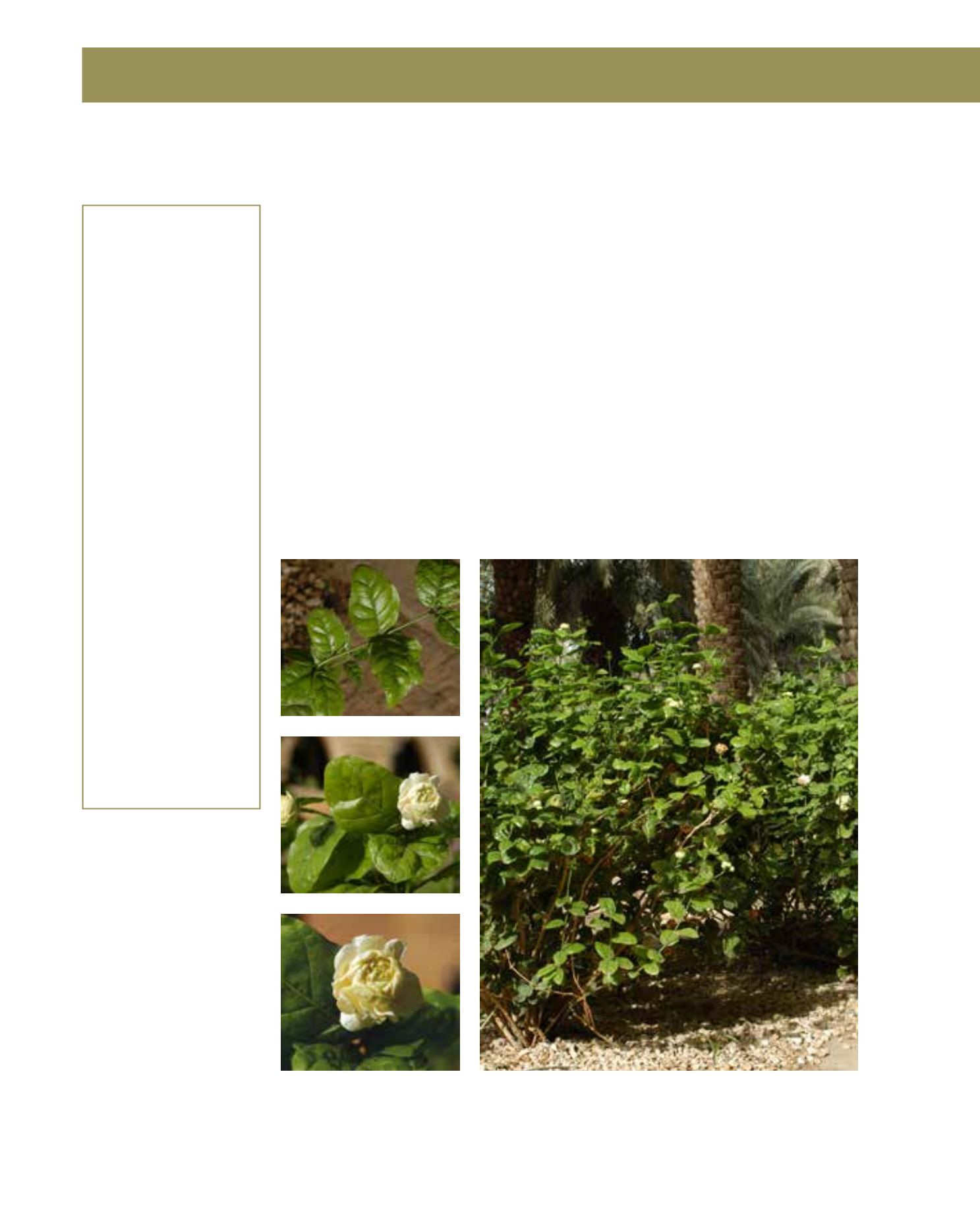

GENERAL
Origin
:
Mediterranean,
sub-tropical
Vigour
:
slow-growing
Humidity
:
semi-arid, semi-
humid, very
humid
Propagation :
sowing and
pricking out,
cuttings
Maintenance :
moderate
CONDITIONS
Urban climate :
resistant
Dessication :
vulnerable
Stagnant water :
vulnerable
Irrigation
:
medium
Salinity/ppm :
low (600 ppm)
Hardiness
:
-3°C
SHAPE
Type
:
shrub
Height
:
2 m-3 m
Spread
:
2 m-3 m
Foliage
:
evergreen
FLOWER
Colour
:
white
Size
:
2 cm - 3 cm
Period
:
March - October
Smell
:
aroma, strong,
gives freely of
its scent, flower,
sweet
FRUIT
Type of fruit :
berry
Fruit size
:
1 cm
Toxicity
:
edible when
processed
Centuries ago, merchants brought the Arabian Jasmine from its native habitat in southern Asia
along trading routes westwards. This is a popular shrub in Arriyadh, which somehow never looks
its best. The evergreen leaves are leathery, glossy and grouped in twos or threes along the twining
stems. They differ from those of other species by being entire. In summer, clusters of white, tu-
bular flowers are borne to emit the outstanding fragrance that jasmines are known for. In other
seasons, flowering is sporadic. Full or partial sun is required to produce abundant inflorescences.
A fertile, well-drained soil allows vital growth so that this climber will stand some drought when
established. However, it appreciates frequent irrigation and generally remains free from pests
and diseases. General purpose fertilisers should be applied in two split doses during spring to
support new growth first and development of flower buds later on. Transplanting is best done
in autumn. Low temperatures are no problem, but Arabian Jasmines should not be exposed to
prolonged frosts. They need to be trained along a support such as a trellis or a pergola reaching
about 3 metres in height. Plants will also grow in containers and tolerate pruning at any time to
form a shrub, for instance, but not a climber. It may also blanket the ground with its attractive
dark-green foliage. Cuttings and sowing are handy methods of propagation. In China, the dried
flowers are used to make the famous jasmine tea and they may also be processed to yield perfume.
173
Jasminum sambac,
Oleaceae
Arabian Jasmine
















